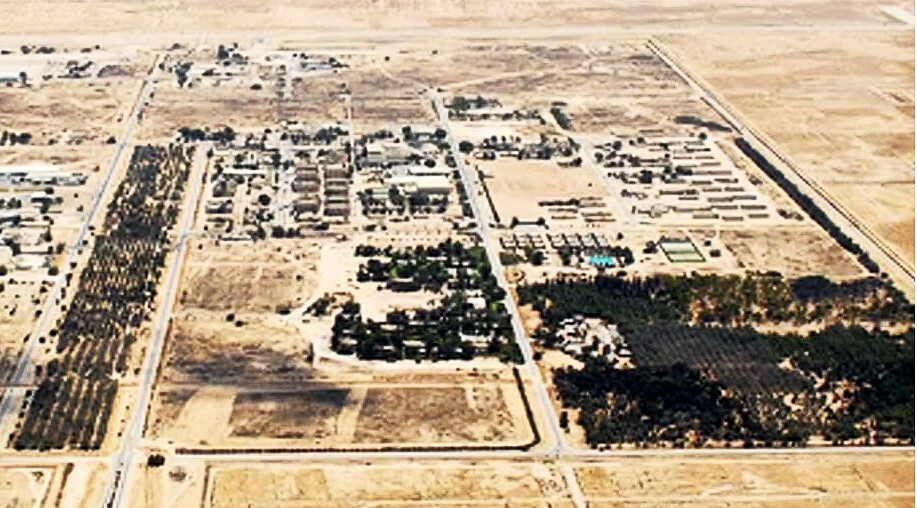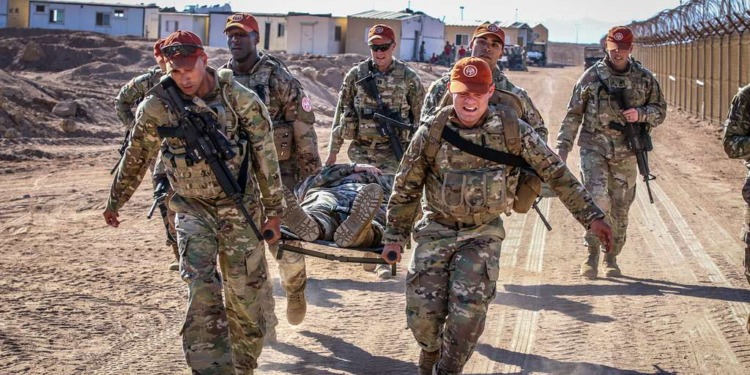As it happens, there is — and the peace model’s origins go back to 1981, when an agreement between Israel, Egypt, and the United States established the Multinational Force and Observers (MFO). Its function 43 years ago was to bring military and civilian leaders together to support diplomatic solutions to the two antagonists — back then, they were Egypt and Israel.
The peace model that led to the MFO worked from that day to this. In 2005, the MFO expanded its tasks to monitor the deployment of border guards along the border between Egypt and Gaza. It could, in fact, become a model for the kind of peace much of the world hopes to establish today in the Middle East.
The Multinational Force and Observers (MFO) has been in existence since 1979 and functioned despite changes in governments and policies
In 1978, the Camp David Accord was organized by then President Jimmy Carter, who brought Egypt President Anwar Sadat and Israeli Prime Minister Menachem Begin to Washington. Sadat had come to power in 1970 after the hugely popular Gamil Nasser died. In 1977, Begin, as the conservative leader of Likud, was elected by the slimmest majority-one vote. Basically, neither man was seen as likely to take great political risks.
It’s important to remember that in the 1970s, there was serious likelihood of a widening Middle East war. In 1978, Israel had invaded southern Lebanon up to the Litani River in response to the Coastal Road massacre near Tel Aviv by Lebanon-based Palestinian militants. In short, it was a time of potential peril for the Middle East and beyond.
What dampened conflict was the Treaty of Peace, signed in 1979 between Egypt and the United States. This treaty drew a set of zones in the Sinai Peninsula where troops, tanks, and other equipment would be authorized.
In 1981, an agreement between Israel, Egypt, and the United States established the Multinational Force and Observers (MFO). Its function: to encourage military and civilian leaders to support diplomatic solutions to maintain the Treaty obligations between Egypt and Israel. In 2005, the MFO expanded its tasks to monitor the deployment of border guards along the border between Egypt and Gaza.
How the MFO Functions
MFO has functioned remarkably well for nearly half a century.
The MFO is now comprised of well over 1,000 troops and a civilian staff of over 150. Through a Liaison System envisaged by the Treaty of Peace, the MFO facilitates dialogue and serves as an intermediary between the parties.
The Chiefs of the Egyptian and Israeli Liaison Systems are in regular contact, and at the working level, military officers meet daily with their counterparts in the Egyptian Liaison Agency with International Organizations (LAWIO) and the Israel Defense Force International Cooperation Division (IDFICD).
At the annual Trilateral Meetings in Rome, Italy, where the MFO is headquartered, senior officials from involved entities exchange views on the operations and finances of the MFO and review the past year’s record of performance.
As to MFO financing: Most of that comes from Egypt, Israel, and the U.S., each contributing one-third of the MFO regular annual budget, supplemented by donor country contributions from Finland, Germany, Japan, the Netherlands, Norway, the Republic of Korea, and Switzerland. According to its audited statement, in 2023 funds from all sources and expenditures were roughly $76 million.
In the years since it was established, the MFO has not garnered high public visibility, remaining relatively obscure and devoid of significant accomplishments or notable setbacks that could have captured public attention.
Related Articles: Gaza War: An Innovative Idea to Untie the Gordian Knot | Gaza’s Invisible Massacre: Aid Workers Killed in Record Numbers | Projected Famine in Gaza: FAO Urges Immediate Access to Deliver Urgent and Critical Assistance at Scale | The War Zone in Gaza Will Leave a Legacy of Hidden Health Risks | Gaza War: From Extreme Violence To Human Kindness | Acute Hunger: 1 in 5 People in Need of Critical Urgent Action | Is the EU Suspending Palestinian Aid or Not?
However, one important and surprisingly successful example has been unveiled: from 2012 to 2016, MFO’s North camp in El Gorah was under threat from the Islamic State of Iraq and the Levant — Sinai Province. It also faced extended periods of water and fuel shortages and a near-total cut-off of internet access and mobile and landline phones. By September 2016, the MFO’s northern camp was reorganized.

The camps are now reinforced with smart fences, more surveillance cameras, and optics.
In short, despite changes in governments, policies, threats, and confrontations, the MFO has continued to expand its responsibilities and is seen as a practical on-the-ground mechanism to maintain a modicum of cooperation between Egypt and Israel.
Is the MFO a Possible Model for When the Gaza War Ends?
Undoubtedly, those who are now directly engaged in negotiations to halt the disasters taking place daily in Gaza are looking at every possible way forward.
Various expert scholars are providing their thoughts and possible resolutions — among them, most notably, Robert Silverman, a lecturer at Shalem College, a senior fellow at the Jerusalem Institute for Strategy and Security, and president of the Inter-Jewish Muslim Alliance.
Silverman has based a possible resolution to the carnage in Gaza this way:
“Once the fighting is finished and humanitarian supply is assured… there should be two separate missions with two commands under a single head: one is a multinational gendarme force to maintain order and begin training a new Gazan police force; and the other is a multinational civilian governance team to help the Gazans rebuild economically and begin the process of governing themselves politically…After it is formed and established in Gaza, the multinational mission must be independent of Israel, Egypt and its member nation governments, with frequent consultations with all of the above.”
Silverman goes on to say:
“The positive model is the Multinational Force and Observers (MFO), a non-UN international organization staffed and funded by 22 member states with a strictly defined mandate… a security mission and a governance/reconstruction mission – while recruiting nations for these two new multinational teams. The Negev Forum countries (Israel, Egypt, Morocco, UAE and Bahrain) should be consulted from the early stages of planning… American friends and allies in Europe, South America and the Pacific.”
To this, I would add:
- Include in the consultations Saudi Arabia, the Palestinian Authority (now referred to by some as the (“State of Palestine”), and Canada;
- Engage the international financial institutions such as the World Bank and Islamic Development Bank to commit to funding the MFO civilian operations, covering such costs for an initial five years, renewing after evaluation for another five years
Can Gaza Find an MFO-Like Solution?
The creation of the MFO was the result of the courage of Egyptian General Anwar Sadat and Menachem Begin, a former member of the Irgun, an Israeli paramilitary organization, to take risks to avert future conflict, brought together by U.S. President Carter. Both Sadat and Begin were recipients of the Nobel Peace Prize.
We are again at such a crucial point in the Middle East, with the Gaza War threatening to expand well beyond. And recently the rocket attack in the Golan Heights is raising fears of an all out war on another front. A new U.S. President will be in charge in 2025, but progress is needed much sooner.
Today, the Egyptian head is Field Marshal Abdel Farrah el-Sisi – the counterpart to Israel’s Benjamin Netanyahu.
The question is: can the current leaders of Israel, Egypt, and the U.S. have the courage and vision to take risks as did their predecessors?
We hope they can and will.
Editor’s Note: The opinions expressed here by the authors are their own, not those of Impakter.com — In the Cover Photo: Soldiers assigned to Task Force Sinai carry a simulated casualty to an extraction point during the Multinational Force and Observers Force Skills Competition in South Camp, Egypt Feb. 17, 2020. Cover Photo Credit: Picryl.










